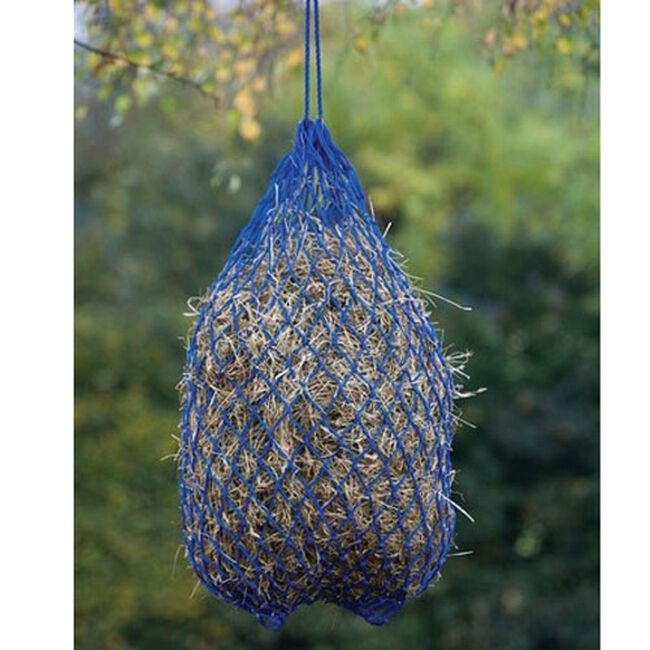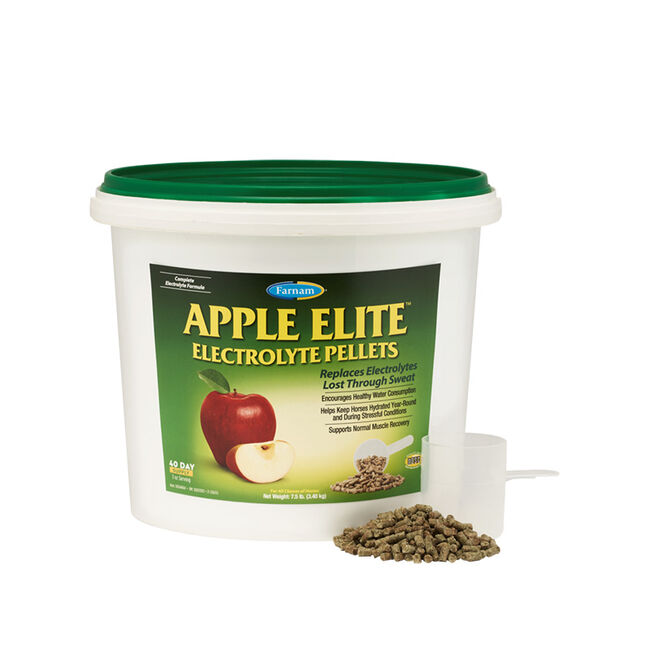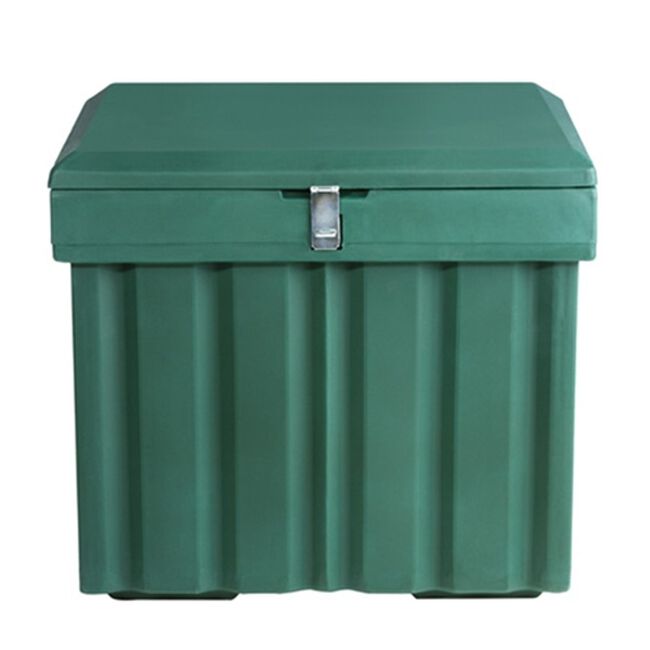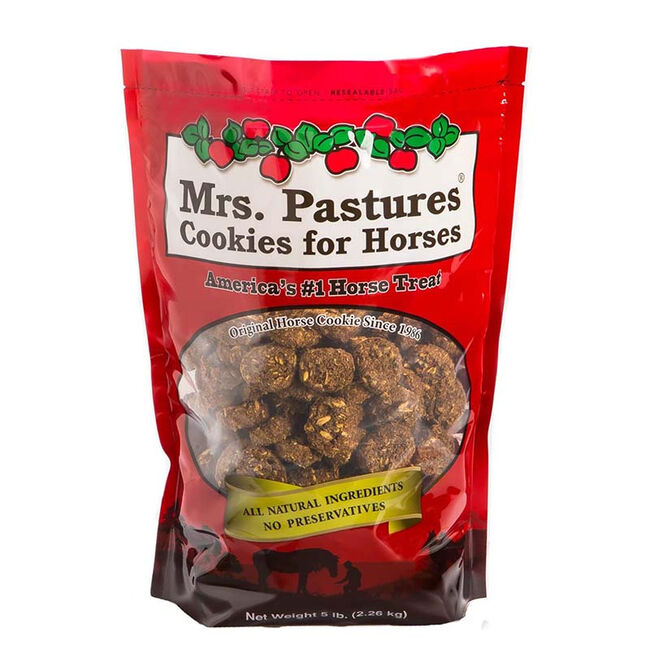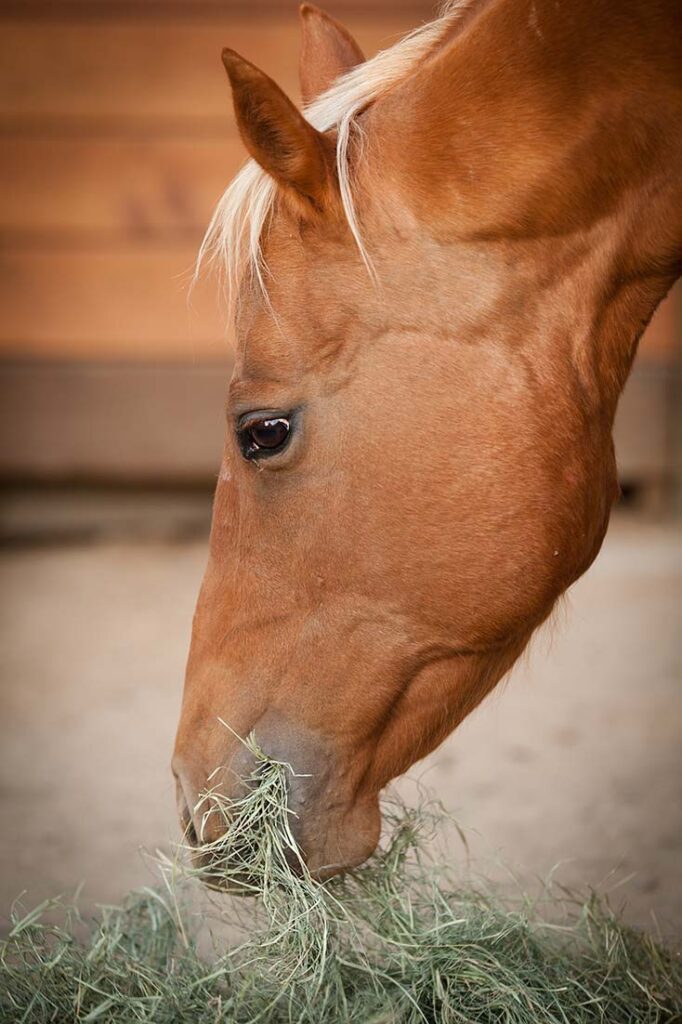
Are you a first time horse owner looking for concise and easy reading information on how to properly feed your new horse or pony? You have come to the right place! From general equine nutrition to best feeding practices, we outline how to ensure your horse is meeting their dietary requirements. At The Cheshire Horse, we love helping new horse owners on their journey and have sought to bring you simplified information about caring for your new horse. In this blog post, we explore basic equine nutrition information and explain exactly what you need to know about feeding your horse.
Your Horse
When it comes to nutrition and figuring out how to feed your horse, it is important to realize that every horse is different. Just like people, every horse has an individual metabolism and dietary needs, all of which are dependent on their age, breed, workload, genetics, and so much more. When building your horse’s nutritional plan, you will want to work with your veterinarian or an equine nutritionist to ensure that your horse is receiving all of its dietary needs. If the amount of work that your horse is performing changes, you may need to adjust your horse’s rations.
It is important that your horse ingests an optimal amount of calories to stay at an ideal weight. Overweight and underweight horses can develop serious medical issues. Because it can be difficult to weigh a horse in most living situations, horse owners use another unit of measurement. Generally, the horse world uses the Henneke Body Score system to determine their horse’s body condition and see if they need to gain or lose weight. This ranks your horse’s body condition on a scale of 1-9 (from emaciated to extremely obese) depending on the amount of fat on your horse’s body. You can learn more about the Henneke Body Score system on our blog post, Determining Your Horse’s Body Score. Ask your veterinarian to assess your new horse’s body score during the pre-purchase exam so that you will have a baseline to refer to later.
Every horse has a different set of dietary requirements. Some horses do well on hay and supplements only, while others may need a significant amount of grain. Supplements exist for all types of conditions and needs, just like the wide variety which are available for people. When you first purchase a horse, it is important to ask the former owners about the horse’s current diet. This will help you establish a baseline and history of their needs, it will also allow you to slowly transition your horse onto your new feeding program (if needed). A slow and gradual transition, over the course of a few weeks, is important because drastic changes in a horse’s diet can cause digestive upset or even colic. When speaking with the previous owners, we recommend asking the following questions:
- What is this horse currently eating? (brand and product names, and amounts)
- How many times a day are they fed?
- Are they eating any supplements? For what reason?
- Have they had any dietary issues in the past? (i.e. too thin, too heavy, insulin resistance, etc.)
- Do the amounts differ during the winter when the horse is in lower amounts of work?
- Has the horse ever colicked?
- Has there ever been a grain, hay, or supplement that did not work well for this particular horse?
Many feed companies have similar products, so we recommend asking for a feed tag of the horse’s current feed. This will help your local feed store find a comparable grain if your specific brand and product are not available in your area.
Forage
Horses have evolved as grazing animals and need a large amount of high-quality forage or pasture in order to keep their digestive systems functioning properly. Horses should have forage available consistently throughout their day to mimic the grazing behavior if not on high-quality pasture. Many equestrians accomplish this by feeding their horses hay periodically throughout the day. Typically, a horse should eat 2-2.5% of its body weight in forage each day, although this will vary depending on your horse’s needs and body composition. Generally speaking, an average 1,000 lb horse should consume 20-25 lb of hay or grass per day.
Pasture can be a large portion of your horse’s forage requirements, especially during the summer months. Just like other new foodstuffs, it is essential that pasture is introduced into your horse’s diet slowly each spring (horses can founder or develop laminitis if it is not introduced gradually). Start with an hour or two each day and incrementally expand the amount of time that you allow your horse to graze. As a general rule of thumb, horses consume 1-2 lb of forage for each hour that they are out on pasture. If your horse has insulin resistance or glucose intolerance concerns, be sure to speak with your veterinarian regarding the best grazing practices for your horse.
If your horse is out on pasture all day long, you will need 2-4 acres of pasture to support them throughout the grazing season. This may not be feasible in all applications, so their pasture can be supplemented with hay, either throughout the day, at night, or both! Some horse owners bring their horses inside the barn or into a dry lot overnight, giving them an opportunity to feed additional hay and let the pastures rest.
Forage should make up the majority of a horse’s diet, so it is important to look for high-quality hay that is free from mold or dust. Mold can cause horses to colic and can lead to severe health issues, even death. Watching for dust is critical since dusty hay (even a little) can cause lifelong respiratory issues. It is important to make sure that you are purchasing horse hay (NOT cow hay) for your horse, which will ensure that it is mold-free. A cow’s digestive system can accommodate mold and dust, but a horse’s cannot. There are a number of different places that you can purchase hay, including feed stores, hay dealers, and local farmers. It is a good idea to talk with your local equestrian community to learn more about your hay source options.
The type of hay which you feed your horse will depend on your horse’s caloric needs. Alfalfa hays are high in protein, making them great for seniors, horses with ulcers, or skinny horses; however, they are not appropriate for overweight horses. On the other hand, grass hays, such as timothy hays and orchard grass hays, are a better choice for horses that do not need to consume a high amount of protein or calories. If your horse has difficulties digesting sugars, such as insulin resistance or Equine Metabolic Syndrome (EMS), you will want to purchase hay that has been tested, so that you are aware of the non-structural carbohydrates (NSC) content.
Older horses and horses with dental conditions often benefit from chopped forage products. These forage blends are high-temperature dried to eliminate mold spores and then cut to a short length. This makes these products both easy to eat and easy to digest. You can learn more about chopped forage on our blog post, Discover the Benefits of Chopped Forage. Chopped hay comes conveniently packaged in heavy-duty plastic bags, which makes it easy to store and feed.
Alfalfa and timothy forage also come in pelleted (often referred to as hay stretcher) and cubed formulations. These are easy to eat and digest. They are a great option if you are having trouble finding quality forage and need to supplement your horse’s rations. Additionally, they are wonderful for horses that have dental issues and cannot properly chew or digest baled hay.
Additionally, you will want to think about how you choose to feed your horse hay. Some horse owners choose to feed their horse on the ground, while others utilize hay racks, feeder bags, or hay bags. If you feed your horse on the ground, you will want to shake out each flake of hay to minimize the dust. You will want to make sure that there is at least one pile of hay for each horse, this will prevent more dominant horses from preventing horses that are lower on the totem pole from eating. Any uneaten hay should be picked up at the next feeding so that it does not become rancid or rot.
Shires Mesh Hay Net
This customer favorite hay net has fine mesh openings so that hay lasts longer and less is wasted on the stable floor.
Make sure that you store your hay in a dry location, such as a hayloft or another hay storage building. You will also want to keep the hay on a pallet if on dirt or cement so that air can circulate and prevent the hay from molding. If hay becomes moldy or dusty, it should be discarded immediately or used for mulch on a garden or lawn.
Water
Access to fresh water is essential for the health and well-being of your horse. Typically, horses drink five to ten gallons of water a day, although this number can fluctuate depending on your horse’s workload, size, and genetic disposition as well as the weather conditions. It is imperative that your horse has access to water both in their stall and in their turnout.
In stalls, many equestrians turn to flat back buckets because they hang close to the wall and hold about five gallons of water. They will need to be refilled daily with clean fresh water. During the winter months, you will need to use a bucket deicer or insulated bucket to prevent ice from forming and keep the water flowing freely. Try to keep your horse’s hay on an opposing wall from their water bucket because some horses have been known to dunk their hay in their buckets!
For turnout situations, stock tanks and water tubs are popular options. Holding upwards of 20 gallons, these tanks do not tip over easily and allow multiple horses to drink at the same time. It is imperative that you monitor the condition of the tank and the cleanliness of the water because it can quickly become dirty, especially if you have several horses using the tank. A good rule of thumb is to look carefully at the water tank and decide if you would be willing to drink out of it. If the answer is no, it is time to clean the tank! Hay piles should be kept at a distance away from the water tank, not only to discourage dunking but also to keep your horse moving throughout the day.
Tank deicers are available to eliminate ice and warm the water during the winter months. Studies have shown that icy, cold water is less appealing than warmer water during the winter months and may discourage the horse from drinking. For this reason, you will want to make sure that there is electricity close to the outdoor water tank, helping you to avoid the use of extension cords which are not recommended for water heaters. There are many different tank deicer models available, with the most popular options being floating deicers, sinking deicers, and drain plug deicers. All of these options keep the water warmed above 33 degrees to prevent the water from freezing.
It is also essential to have adequate drainage around the water tank in your pasture. Water tends to splash around this high traffic area, which can detrimentally affect the footing. If the mud is too deep or if it becomes too icy around the water tank, this can discourage your horse from drinking.
Horses can easily become dehydrated in the winter as well as in the summer. It is especially important to watch that your horse continues drinking in the winter months because they may drink as much as they need to, due to lack of exercise and the cold weather. If your horse is dehydrated, serious health conditions can occur. Signs of dehydration include dark urine, loss of appetite, lethargy, and a high heart rate. Severe dehydration can lead to seizures, colic, kidney failure, and even death. If you think your horse is dehydrated, we suggest providing them with a dosage of an electrolyte and plenty of fresh, clean water, which will encourage your horse to drink in addition to supplementing them with the minerals and vitamins that their body needs to recover. You can learn more about electrolytes and their usage on our blog post, Making Sense of Salt, Electrolytes, and Amino Acids.
Farnam Apple Elite Electrolyte Pellets
Now available in pellet form, this popular electrolyte provides a complete electrolyte formula to replace vital minerals and encourage water consumption year-round.
Grain
Horse grain is a highly concentrated form of calories that can be fed to horses to supplement their forage consumption. Generally, it contains ingredients such as oats, barley, corn, and wheat. Not every horse needs grain (some horses thrive on forage and supplements alone), but horses who are in heavy work, underweight, and hard keepers (difficult to keep weight on) are prime candidates for eating grain as a part of their diet. Commercial grains are specially formulated to provide horses with all of their essential nutrients, provided they are fed a full serving of grain each day. You can read the back of the grain bag or the feed tag to learn exactly how much grain you need to feed your horse each day to meet their nutritional needs. Grain should always be measured by weight, not volume, because settling can occur.
If you choose to feed grain, consider splitting it up into at least two feedings. Try to keep your horse’s grain consumption under 5 lb each feeding, adding more feedings as necessary. This will ensure that your horse’s digestive system has time to adequately process this nutrient-dense foodstuff. If at all possible, feed your horse in their stall and not in a herd situation. This ensures that each horse gets their own rations and that the more dominant horses will not eat the other horse’s grain. Small, more frequent feedings are the best on your horse’s system. Also, it is better to give horses their grain after they have been on pasture or had some hay. Feeding grain on an empty stomach can be irritating to the stomach lining.
Grain is typically broken down into three categories, pellets, sweet feed, and textured feed. Pellets, also referred to as extruded feed, are ground whole grains that are mixed with vitamins and minerals. Then, they are formed into baked pellets which hold their shape well, this means that each pellet contains consistent nutrients. Pellets usually have low sugar content, so are perfect for many horses that gain weight easily. Also, pellets are easy to store – they do not freeze in the winter and have a longer shelf life than sweet feeds and whole grains. Pelleted feed is the most popular grain category among The Cheshire Horse customers.
Traditionally, sweet feed is a grain that is coated in molasses, making it highly palatable to horses… this also makes it higher in sugar content. Generally, sweet feed is not recommended for horses with insulin resistance or horses that crib, because it tends to exacerbate these issues. Sweet feed can be challenging to store during the summer. It can spoil and/or become infected with mites during long stretches of very hot, humid weather. We recommend that you only buy what is needed for a week or two during the summer. Textured feeds are a mixture of various whole-grain ingredients, such as corn, oats, and grain pellets. Many grain companies manufacture different formulations for all of your horse’s life stages and activity levels, such as high-performance horses or senior horses.
If your horse only needs a small amount of grain, a ration balancer (usually a pellet) may be an appropriate grain. These provide full servings of vitamins and minerals in a small dosage, which ensures that your horse is receiving all of the essential nutrients that they need to thrive.
Complete feeds are yet another category of grain. These feeds contain forage as well as grain components. If your horse is unable to chew hay, these feeds can substitute for your horse’s forage needs. Many senior feeds are considered complete feeds, allowing your horse to receive their dietary requirements in one convenient package.
There are additional concentrates that can be fed to your horse to increase your horse’s caloric intake. Beet pulp and bran can be mixed with water which also helps to increase their hydration level and keep their digestive system functioning properly. Many horse owners whip up warm beet pulp concoctions with apples and carrots in the winter for a warm meal/treat.
Grain needs to be stored in an airtight container, such as the Horsemen’s Pride Feed Bin, which can protect against pests as well as horses. Rodents and bugs can destroy the quality of the grain, while also potentially spreading harmful diseases. It is also imperative that the feed room is “horse-proof” because if a horse or pony gets into the grain bin, they will eat continuously… this may lead to colic or even death, depending on the level of consumption.
Horsemen’s Pride Feed Bin
This sturdy, water- and rodent-resistant polyethylene feed storage bin is separated by a removable wood divider into two compartments
Salt
All horses need salt as part of their diet. Many grains and supplements are fortified with salts, but it is essential that you check the labels to ensure that your horse is receiving enough in their diet. Typically, horses need 1-2 tablespoons of salt each day to meet their requirements.
Horses are able to regulate their salt intake on their own as well. Many equestrians provide their horses with loose salt or salt blocks to allow their horses to ingest as much salt as their individual bodies need.
Supplements
There are a number of different supplements on the market all of which have a myriad of benefits. Some of the more widely used supplements include multi-vitamin supplements, joint supplements, weight gain supplements, hoof care supplements, coat care supplements, and electrolytes. There is also a variety of highly specialized supplements, such as supplements for horses who are insulin resistant or anhidrosis supplements (horses who cannot sweat on their own).
Exactly what supplement(s) that you choose to feed your horse will depend on their individual needs, but there are a few supplements that we frequently recommend to many of our customers. If horses are not receiving a full ration of grain, a vitamin/mineral supplement will ensure that your horse receives an adequate daily intake of these essential nutrients. Horses in a heavy workload tend to benefit from joint supplements, while horses with poor hoof quality are prime candidates for hoof supplements.
Many horses in New England are vitamin E deficient and require supplementation. This is because vitamin E is primarily found in green grass and horses that live in the northern United States with a shorter summer season do not have access to grass all year round. Vitamin E helps your horse’s muscle tone, while also ensuring a helping cardiovascular, immune, and reproductive system. You can learn more about vitamin E supplements on our blog post, Demystifying Vitamin E Supplements. Selenium is another nutrient that is closely associated with vitamin E deficiencies, especially in the Northeast, because our soil is typically devoid of this essential nutrient. You may want to speak with your veterinarian about testing your horse’s blood levels to see if they require additional supplementation.
Treats
Feeding your horse treats can be so much fun, but it is important to remember that they are a piece of the horse’s diet. Some treats fit into your horse’s diet well, while others may have a detrimental effect. There is an incredible selection of horse treats that are healthy for your horse, such as treats that include supplements integrated into the formulations or low-sugar horses.
It is very important to assess the sugar content of your horse’s treats if they have insulin resistance or Cushing’s. Fruits and vegetables, such as apples, carrots, bananas, and celery, can also make healthy and delicious treats. If your horse has dental problems, soft treats may be more appropriate (and well appreciated!).
Mrs. Pastures Cookies for Horses
These horse treats have been favorites of horse owners everywhere since 1986.
When it comes to properly feeding your horse, we know that there are many considerations you will need to make. With a bit of education and guidance, you can build a diet for your new horse to help them thrive.
At The Cheshire Horse, we are committed to helping horses and their owners. If you have any questions regarding your horse’s diet or would like to schedule a complimentary equine nutrition consultation, we encourage you to contact a member of our friendly and highly trained sales staff.

